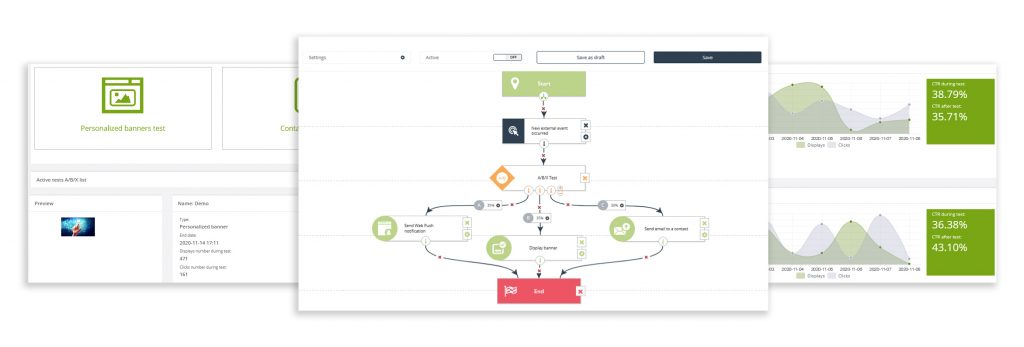
Succeeding in your marketing campaigns will usually take some trial and error. It’s worth the trouble though. Optimization of marketing automation is the key ingredient of any company’s growth and good sales results, and A/B/X testing, which is a huge part of optimization, can raise your conversion by 46%. We have some tips for you on how to manage and use the A/B/X tests feature available on the SALESmanago platform, and achieve the highest level of your automation processes optimization, for better conversion and higher revenue.
Choose your best option and get the highest chance of conversion
The optimization of Automation Processes comes with many upsides. For example, dynamic emails can lift your conversion rate by even 64% and in general improve your email marketing campaigns, increasing the OR and CTOR. Automation will help you successfully reach out to new potential customers, and thanks to A/B/X tests you can pick the best way of proceeding.
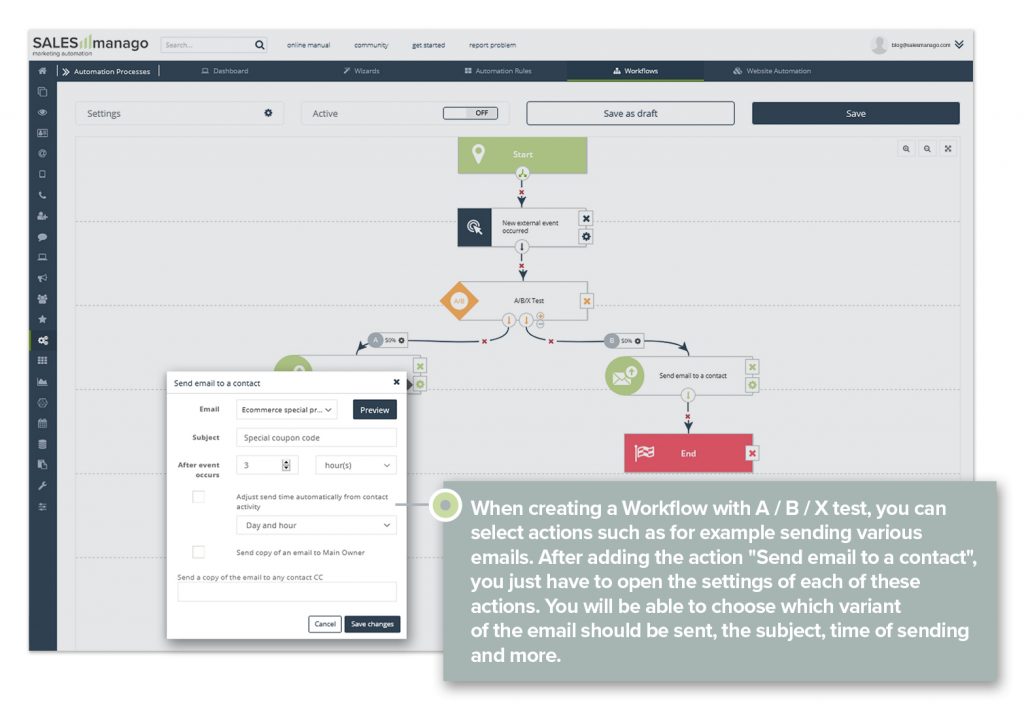
SALESmanago’s A/B/X tests module gives you an insight into the performance of your campaigns, showing you which content delivered by you to your customers achieved the highest results. You can optimize things like the content, the subject, or the time of sending/display. The system will analyze the data for you after you define the level of expected KPI from specific tests, and the information will be gathered by the platform and displayed in real-time on a dedicated analytical panel.
For example, test results for an A/B/X test of a specific marketing campaign with a personalized banner created on the Website Personalization Panel will be visible, under Dynamic Content Test, and the ones created with the use of Workflow – in Automation Processes, after clicking on a specific Workflow Analytics.
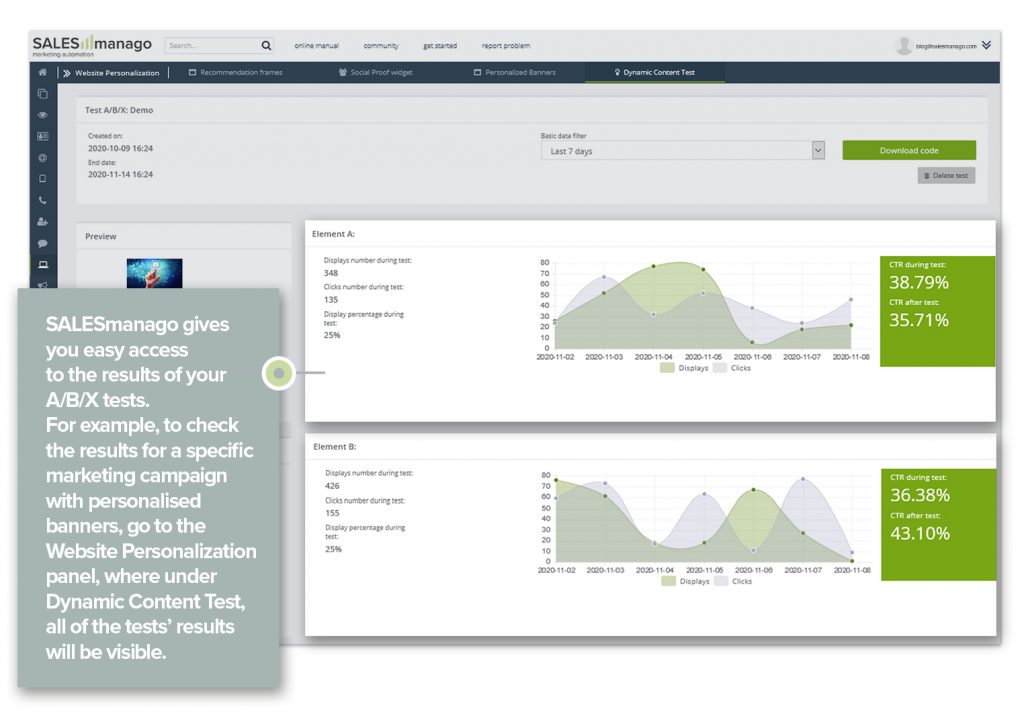
Testing the best variants of a single marketing campaign is probably the most popular way of A/B/X tests use, starting from small, yet important things, like message subject, to the content of the offer itself. However, you can do so much more with it and take it further, by optimizing your Automation processes, including abandoned carts and win-back campaigns.
Set your campaigns to succeed, using A/B/X tests in Workflow
While building any of your Workflow campaigns, which include basic elements like Events, Conditions, and Actions, you can create up to four A/B/X tests for each of those elements. It’s a great way of checking for example which form of contact with a customer resulted in conversion, and which ones are not effective enough for your liking.
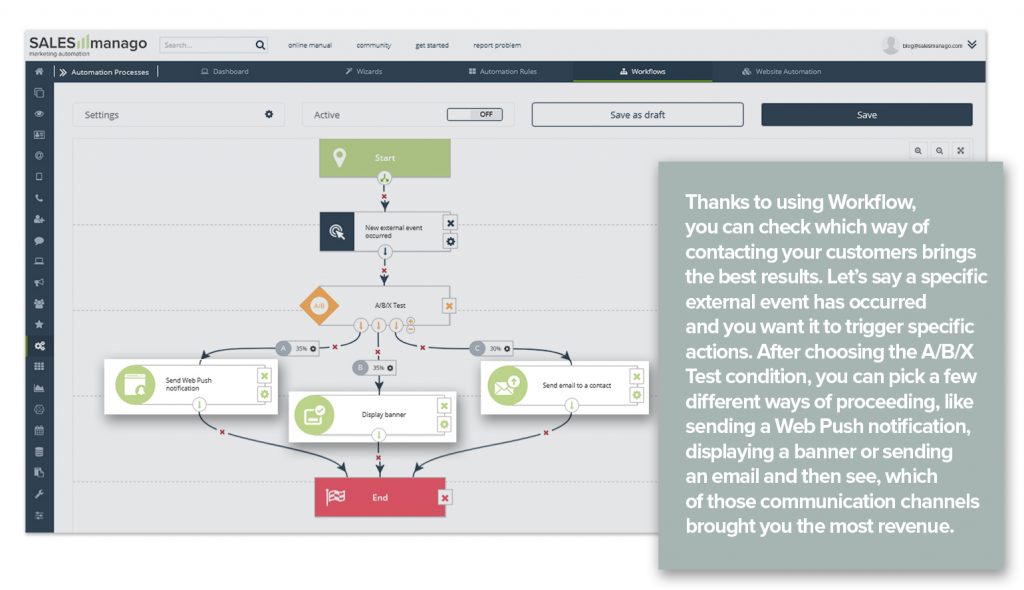
Let’s say your contact clicked on a link in an email or downloaded an ebook and that triggered the A/B/X tests to start. You can for example send a test email, a banner, and a Web Push notification, and see which of those is the best channel of reaching out to the contact, based on the results. In the same way, you can also send different emails to check which one gets the best reaction from your contacts.
To configure and start an A/B/X test, you need to go to Automation Processes on the SALESmanago platform. You have to set an event that will start the Workflow, pick the A/B/X test condition and actions that’ll follow, for example sending three different emails. You choose each one of them from the email list, set their subjects, sending time, and more.
Save your abandoned carts with A/B/X tests
Research shows that over 75% of situations where the customer adds something to the cart, will end up in the purchase not being finalized. A/B/X tests can be useful while trying to bring the customer back to your offer and save the abandoned cart.
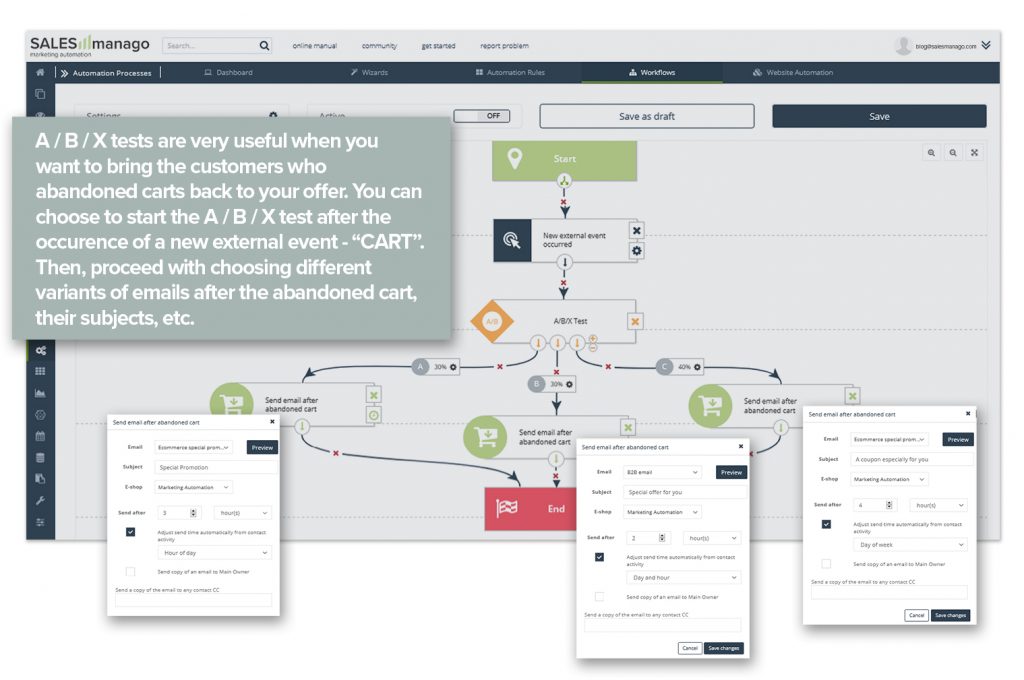
In Automation Processes, you can create a Workflow with the starting point being the “New external event occurred” – “CART”. You can set details like for example the value of an abandoned cart, date, or products. Then, you add the A/B/C test condition, from which you can proceed with adding different actions, like Web Push notifications, display banner, or, again, different variants of emails, choosing from the same options – ready emails from the list, subject, etc.
It all lets you experiment with different options, gives you information about how they all performed, and based on that, you can build your next marketing campaigns already with that knowledge and make them more successful.
 Follow
Follow
















